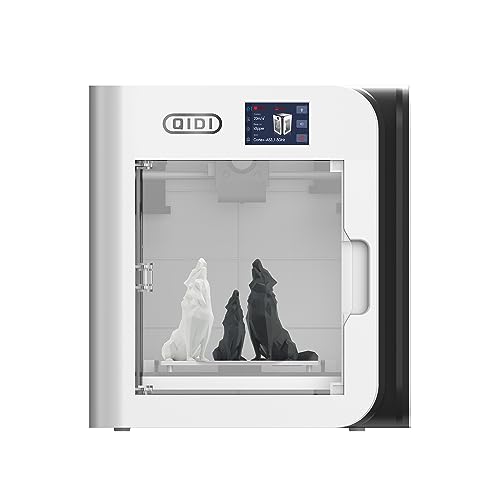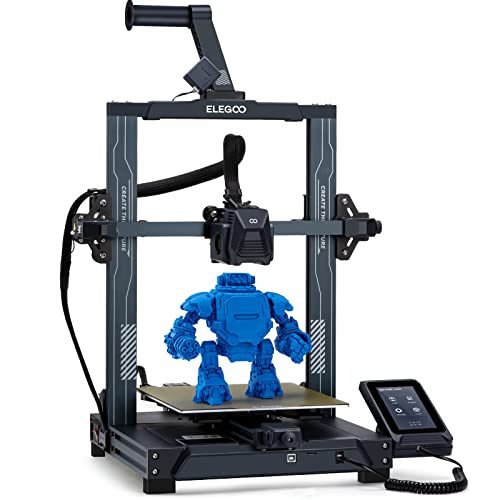Looking for your first 3D printer can feel overwhelming, especially with so many options out there. But don’t worry! Finding the right fit is easier than you think. Start by considering what you want to make. Are you into fun models, practical items, or maybe even prototypes for a project? Knowing what you plan to print helps narrow down the choices.
Next on the list is ease of use. As a newbie, you’ll want a 3D printer that’s user-friendly and doesn’t come with a steep learning curve. Look for models that offer simple setup, a clear interface, and good customer support. Some printers even come with online communities where you can ask questions and share your creations, which is super helpful for beginners.
Don’t forget about the size! Think about how big you want your prints to be. If you’re just starting out, something with a smaller build volume might work just fine. But if you have bigger projects in mind, it might be worth investing in a larger printer from the get-go.
Lastly, pay attention to materials. Different 3D printers work with various filaments like PLA, ABS, or PETG. For beginners, PLA is often recommended because it’s easy to print with and is pretty forgiving. Once you get the hang of it, you can experiment with other materials.
Overall, choosing the right 3D printer for you boils down to what you want to create, how easy you want the process to be, the size you need, and the materials you'll use. Keep these factors in mind, and you’ll find a great fit for your adventures in 3D printing!
Understanding 3D Printing Basics
3D printing might sound like something from a sci-fi movie, but it’s actually a pretty cool way to create objects right from your computer. At its core, 3D printing takes a digital model and turns it into a physical item, layer by layer. Whether you’re into making toys, tools, or even art, understanding the basics can help you get started.
So how does it work? First, you design something on your computer using special software or download a pre-made design. Once you have your model, the printer uses a material, often plastic filament, to build it up layer by layer. Think of it like frosting a cake, where each layer adds to the final product. This means you can create really complex shapes that traditional methods can’t handle.
When diving into 3D Printers for Beginners, you’ll come across different types of printers. The most popular are FDM (Fused Deposition Modeling) printers. They’re user-friendly and perfect if you’re just starting out. Then there are resin printers, which can create super detailed designs but require a bit more know-how and maintenance.
Getting the right materials is also key. Depending on what you want to print, you might choose PLA filament for beginners because it’s easy to work with and biodegradable. There’s also ABS, which is tough and great for functional parts but can be a bit trickier. Make sure to think about what you want to create when picking your supplies!
In a nutshell, 3D printing opens up a world of creativity. With 3D Printers for Beginners, you’ll have the tools to turn your ideas into reality. Once you get the hang of it, you might find yourself printing all sorts of fun and useful items! Just dive in, have fun, and don’t be afraid to experiment.
QIDI X-Smart3: Faster, Higher Quality 3D Printer for Beginners
Experience faster printing and superior quality with the QIDI X-Smart3, the perfect 3D printer for beginners
Product information
Product Review Score
4.4 out of 5 stars
143 reviewsProduct links
Essential Tools and Supplies You Need
If you're jumping into the exciting world of 3D printing, there are some essential tools and supplies you absolutely need to get started. Don't worry, you won’t break the bank collecting these items. They’re pretty affordable and can make your experience smoother and more fun!
First off, you’ll need filament. This is the material your 3D printer uses to build up your designs layer by layer. PLA is a great choice for beginners because it's easy to work with and produces fantastic results. You can find it in all sorts of colors, which makes your prints even cooler!
Next on the list is a good slicing software. This tool takes your 3D model and prepares it for printing. It essentially converts your design into instructions the printer can understand. Some popular options are Cura and PrusaSlicer. Both are user-friendly and will set you up for success without a steep learning curve.
Don’t forget a set of hand tools! Having some basic tools on hand can help with cleanup and assembly. Consider grabbing a pair of tweezers, a spatula for removing prints, and some sandpaper for finishing touches. These little tools will help you fix minor issues and make your 3D printing experience much more enjoyable.
Lastly, a reliable workspace is key. You want a clean and well-lit area to set up your 3D printer. Make sure it’s accessible and has enough room for your projects. This setup will keep you motivated and ready to tackle all your creations as you dive into the world of 3D Printers for Beginners!
K10 Compact Portable 3D Printer for Beginners
Experience hassle-free printing with this easy-to-use and compact 3D printer designed specifically for those just starting out
Product information
€117.87
Product Review Score
4.49 out of 5 stars
191 reviewsProduct links
Tips for Your First 3D Print
Getting started with 3D printers for beginners can feel a bit overwhelming, but it doesn’t have to be! Here are some simple tips to help you make your first print a success.
First things first, take some time to set up your printer. Make sure it's on a stable surface and that you’ve leveled the print bed properly. A level bed is super important for a good first print. If your bed is out of alignment, you might end up with a failed print before you even get started.
Next, choose a beginner-friendly model to print. Look for simple designs that don’t require a lot of complex settings or features. Websites like Thingiverse or MyMiniFactory have a ton of options suitable for newcomers. Just download the file, slice it using your 3D printing software, and you’re ready to go.
Don't forget about filament! For your first print, stick with a common material like PLA. It’s easy to work with and doesn’t need a heated bed, which takes the stress out of the process. Also, keep an eye on your printer as it runs. It’s normal to feel a little nervous, but checking often helps you catch any issues right away.
Finally, have fun with it! 3D printing is all about experimenting and learning. Don’t worry if your first print isn’t perfect. Just dive in and enjoy the journey of using 3D printers for beginners. You'll be creating awesome stuff in no time!





